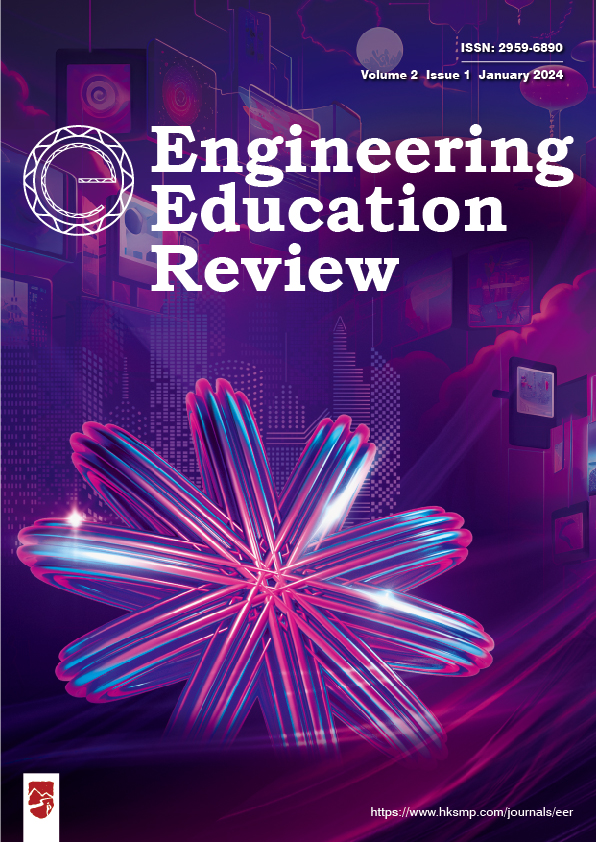Reflections on educational reform supporting build China into a world leader in science and technology
DOI:
https://doi.org/10.54844/eer.2023.0503Abstract
Building a science & technology’s world leader is an important goal for China by 2035, how to build a strong country in science and technology - high-level scientific talent is the fundamental supporting factor. Historically, Germany, the United States and Japan, three late-developing catching-up countries in the process of moving towards a scientific and technological power, have successfully implemented high-level scientific talent training initiatives, ultimately promoting the strong rise of science and technology. According to the experience of the three countries, the cultivation of high-level scientific talents is mainly achieved through major reforms in education, especially research-oriented education reform. At present, China is entering a new stage of development in building a scientific and technological power, the domestic and international development situation is more severe, and the law of science and technology itself is evolving at an accelerated pace, which puts forward new requirements for the cultivation of high-level scientific talents, and education reform is imperative. In comparison with the experience of Germany, the United States and Japan, China's current high-level research-oriented education still has many problems, it is difficult to support self-reliance and self-improvement in science & technology and build China into a world leader in science & technology. To sum up the history and face the reality, it is suggested that China should establish the concept of "integration of science and education" as soon as possible, promote education reform under the traction of scientific and technological needs, comprehensively sort out and reshape the positioning of universities, accelerate the reform of high-level research education, and increase the reform of primary and secondary education to prepare for the cultivation of high-level scientific talents in a comprehensive and systematic way.
References
Qin Z, Han JW. World Leader in Science and Technology: Connotation and Thinking. Forum Sci Technol China. 2022(11):1–8.
Qin Z, Sun FQ, Yuan L. Experience and Enlightenment of Germany, United States, and Japan in Building a Powerhouse in Science and Technology. Sci Technol Manage Res. 2022(12):40–45.
Bie DR, LI LM. The History and Educational Ideas of Berlin University and Its Inspirations. Fudan Educ Forum. 2010;8(6):8–15.
The program team of CCTV’s. The Rise of The Great Nations: Germany. China Publishing Group China Democratic and Legal Publishing House, 2006.
Qin Z. Experience and Enlightenment of the US in Building a World Power in Science and Technology. Innov Sci Technol. 2022;22(3):81–92.
Zhang L. The Structural Integration of Science and Education and the Origin of Research University - On the System Innovation of Johns Hopkins University. J High Educ. 2016(5):79–86.
Liu CH. Daniel Gilman and the rise of Johns Hopkins University. J High Educ Manage. 2017;11(1):14–20.
Gu XL. The Pioneer’s Power:The Influence of Johns Hopkins University on the Development of American Research Universities. J Dalian Uni Technol (Soc Sci). 2021;32(1):55–58.
Fu L, Xia ZG. Infiltration and Resistance: Modern Japanese Nationalism, Militarism, and Japanese Universities. Social Scie Front. 2016(4):215–221.
Shi YD. Japan State University: Generation, Transformation and Development. Int Comp Educ. 2007(7):46–51.
Shi YD. Redefining the Mission: The Reform of the National University in Japan. J High Educ. 2016;37(3):104–109.
Zhou C. Nobel Prize 120th Anniversary: How can China catch up with the rise of Germany, the United States, and Japan? Accessed November 2, 2021. https://www.sohu.com/a/437332961_260616.
Qin Z, Zhou HQ, Liu RH. Global Science and Technology Innovation Trend in the Post-epidemic Era and Suggestions. Global Sci Technol Econ. 2021;36(8):15–19.
Published
Issue
Section
Downloads
License
Copyright (c) 2024 Zheng Qin, Minglei Ding

This work is licensed under a Creative Commons Attribution-NonCommercial-ShareAlike 4.0 International License.






